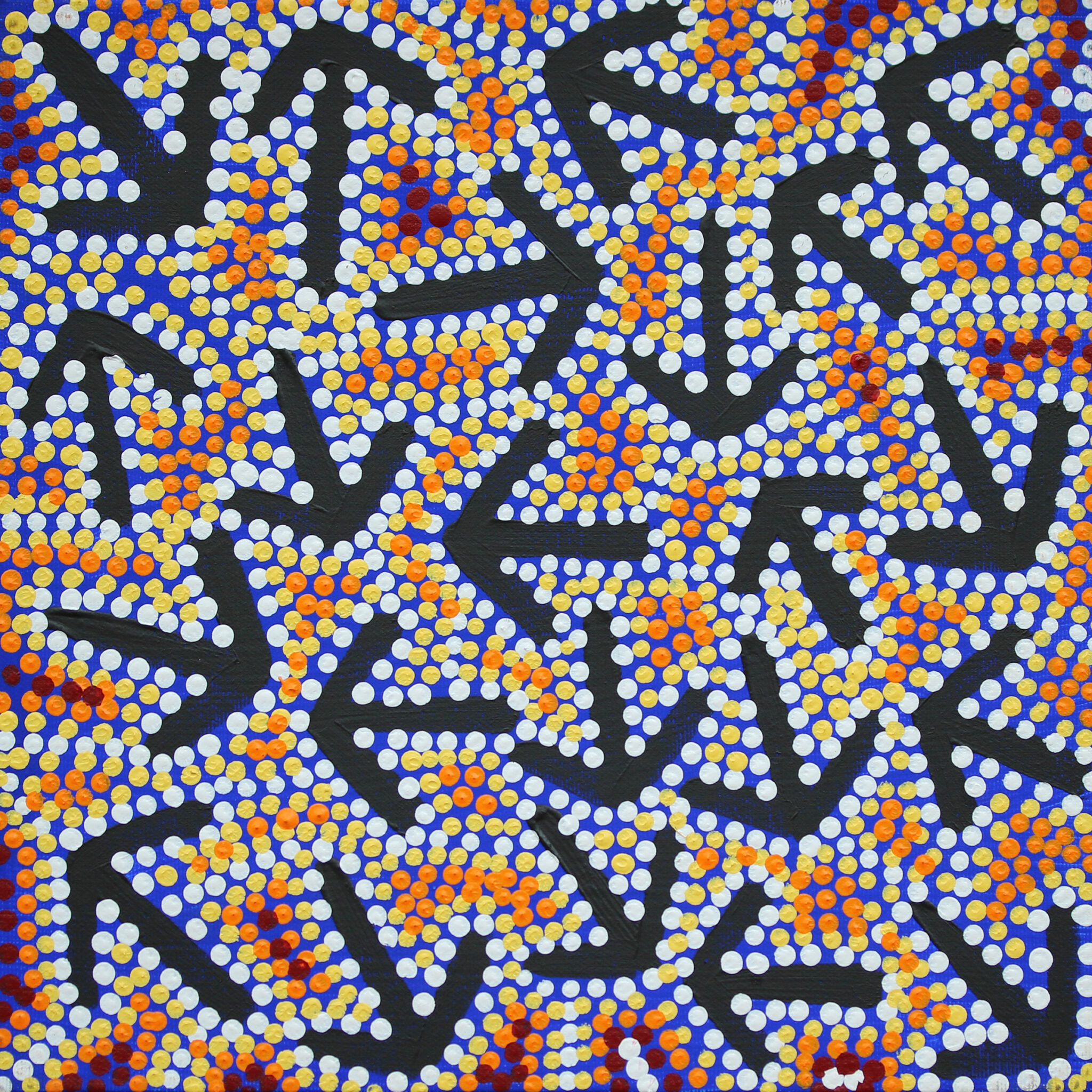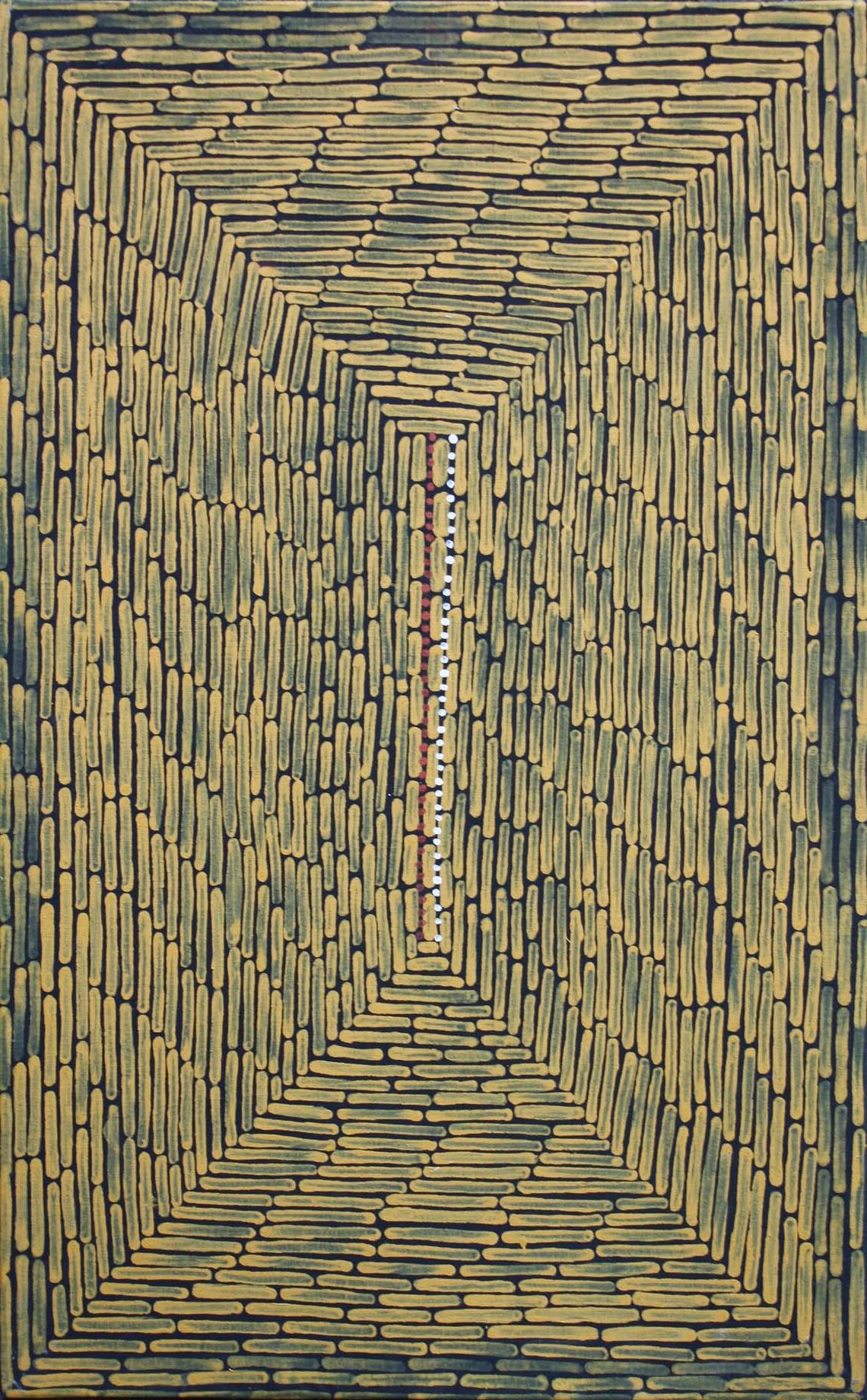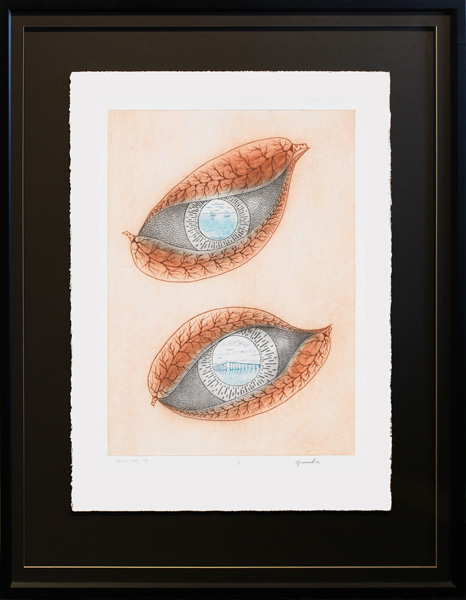Serial:
Size:
$2,727 (tax inc.)
SOLD
The story:
From the Duyfken (Little dove): Aboriginal print portfolio This limited edition print portfolio was produced in July 2006 to commemorate the 400th anniversary of Dutch-Australian relations. Sponsored by Rabobank, the portfolio was produced by the Australian Print Workshop, Melbourne, in collaboration with the Embassy of the Kingdom of the Netherlands. The title of the portfolio is drawn from the name of the first Dutch ship to land on Australian shores, the Duyfken or Little Dove. A vessel of the Dutch East India Company, the Duyfken landed on the west coast of Cape York Peninsula in March 1606 and Captain William Janszoon and his men went ashore. The portfolio is based on the notion of ‘first encounters’ to highlight this little known fact. The Duyfken portfolio brings together 10 Indigenous artists from across the country with diverse art practices, resulting in an important collection of works that explore the notion of ‘first encounters’ in a number of ways and shed light on the exchanges that took place with a number of countries prior to colonisation. Ten indigenous artists, from regions around Australia which were visited by the Dutch 400 years ago, were given the opportunity to produce a permanent record of this commemoration in the form of a limited edition print, to be included in the commissioned Portfolio. The artists came to Melbourne to work with APW Printers and produce their print for the Portfolio. The Artists were: Karen Casey and Allan Mansell from Tasmania, Dulamari (Djalinda Yunupingu) and Dhuwarrwarr Marika from north-east Arnhem Land, Janice Murray and Pedro Wonaeamirri from Melville Island, Garry Namponan and Leonie Pootchemunka from Aurukun, western Cape York Peninsula, and Laurel Nannup and Chris Pease from south Western Australia. The portfolio was presented as a boxed set in an edition of 50. A number were donated by the Kingdom of the Netherlands and the projects sponsors to major public art museums throughout Australia and overseas including: National Gallery of Australia; National Gallery of Victoria, Art Gallery of Western Australia, Art Gallery of NSW, Art Gallery of SA, Queensland Art Gallery, Aboriginal Art Museum, Utrecht, the Netherlands; and The British Museum, London. The Portfolio was launched in Australia at the Art Gallery of NSW, Sydney, by Their Royal Highnesses Crown Prince Willem-Alexander and Princess Máxima of the Netherlands, on Saturday 28 October 2006. The Portfolio was also exhibited at the APW Gallery in Melbourne and at other venues around Australia. This significant project was realised through a highly successful creative partnership between Australian Print Workshop, the Embassy of the Kingdom of the Netherlands, and four corporate partners – Forbo, Rabobank, Rio Tinto, and Wesfarmers. In May 2007, APW was awarded a Gold Medal for the Duyfken Folio at the prestigious 24th National Print Awards – the equivalent of the printing industry’s Oscars. This particular print by South Bruny Islander artist Allan Mansell is #4 of 5 artists proofs printed before the 50 prints that constituted the portfolio series. The artist has entitled the print “i”. The portfolio catalogue states: The leaves represent Tasmania where there are more varieties of gum trees than anywhere else in Australia. Within each leaf is the gum tree itself, as in the veins of the eyelid. The circles represent harmony. The inner circle symbolises contact between the Dutch and Tasmanian Aboriginal people. As they did not meet physically, contact was through sight: the upper eye sees Dutch ships, the lower eye sees the Tasman Bridge (in Hobart) as a symbol of the bridge between the Dutch and Aboriginal people. The colour within the leaves is that of the earth. The blue in the eyes refers to Europeans and blue is symbolic of the upper classes in history as blue was a precious pigment. Allan explains further that the blue is delft blue – highly prized and very valuable. In similar vein, red ochre was also highly prized by the Tasmanian Aboriginal men and was traded like gold. It was used by the elders to braid their hair. The bubbles surrounding the iris represents the time of year that Tasman arrived on the shores of what he named Van Diemen’s Land. It was 24 November 1642 in our spring. Allan made a seies of etchings showing the four seasons in 2003 and spring was the effervescent season – hence the bubbles! Another artist’s proof of this etching is in the collection of the Tasmanian Museum and Art Gallery. It was exhibited in MONA’s Theatre of the World exhibition at MONA in 2012/13 and subsequently in Paris. It sat in the ”eye” room alongside of Pablo Picasso’s Weeping Woman painting that had been loaned from the National Gallery of Victoria – a wonderful juxtaposition of ocular imagery.
Related artwork:
-
29 Hunter St, Hobart 7000,
Tasmania, Australia - +61 3 6236 9200
- euan@artmob.com.au
Cash – locally only – up to $10,000 only. Layby facilities available. Card details can be advised securely using WhatsApp.
© Art Mob Pty Ltd, Aboriginal Fine Art Dealer, all rights reserved.



